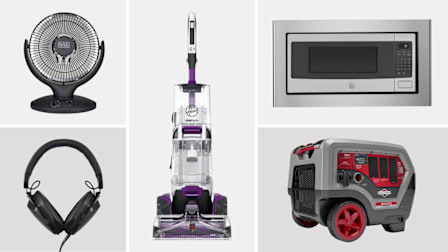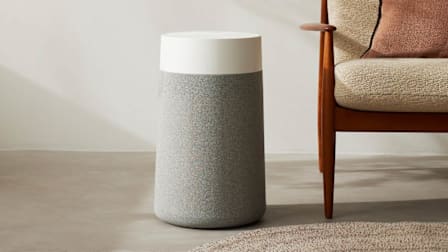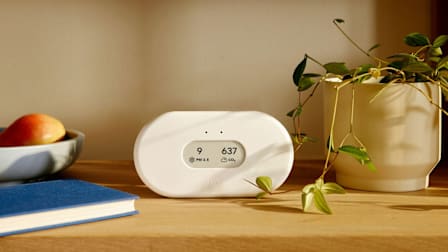Do Molekule Air Purifiers Live Up to the Hype?
CR tested the air purifiers everyone’s talking about—and recommends three better alternatives
When you shop through retailer links on our site, we may earn affiliate commissions. 100% of the fees we collect are used to support our nonprofit mission. Learn more.

When the Molekule Air was released in early 2017, it made quite a splash. On social media, it gained attention for its sleek, cylindrical design with a vegan leather strap attached to a clean, minimalist home. Amid calming mint-green graphics were manufacturer claims that this new-to-market product with a revolutionary technology would destroy the harmful mold, viruses, bacteria, and gaseous chemicals lurking in the air you breathe at home.
- Molekule's Filtering Technology: What Is PECO?
- Our Test Results
- Best Air Purifiers
What Is PECO?
This acronym is short for photoelectrochemical oxidation. It isn’t new technology, per se, but rather a boosted version of photocatalytic oxidation (PCO), which has been used for decades to clean contaminated air and water.
A typical mesh filter—HEPA, for instance—captures only airborne particles. PECO and PCO, however, take it one step further and also target gases. They do this by coating filters in a catalyst (PCO usually uses titanium dioxide) that reacts with UV light to oxidize gaseous pollutants and break them down into harmless molecules.
Can a DIY air purifier help with wildfire smoke? We tested this popular social media hack in the lab; here’s what to know before trying it at home.
According to the Environmental Protection Agency, PCO air cleaners can break down many types of gaseous pollutants, but not the ones that are typically found in indoor air. The process can also react with some pollutants to generate other dangerous byproducts, such as ozone, formaldehyde, nitrogen dioxide, and carbon monoxide.
Because of these factors, the EPA reports that to safely, effectively, and efficiently eliminate common gases and microbes in the home, PCO technology needs to improve. Molekule says it has done just that.
“PCO was inefficient in destroying pollutants, so we fine-tuned all the parameters,” Jaya Rao, Molekule’s co-founder, said of the brand’s technology when the original Molekule Air was released. “PECO innovations happened on many levels: the chemical coating, the filter, as well as the UV lighting.” Working together, she says, these innovations make PECO work faster and more efficiently than PCO, allowing it to destroy gases, bacteria, viruses, and mold spores—without producing any harmful byproducts. When speaking to CR, Rao declined to go into detail about what the company uses for the catalyst.
CR tests for particle reduction and not for gas or microbe removal. So we asked James Dickerson, CR’s chief scientific officer at the time of our initial Molekule testing, whether Molekule’s claims had any merit.
“Theoretically, PECO could work to eliminate microscopic airborne molecules,” Dickerson said. But he also pointed out that if it’s not even proficient enough at catching larger airborne molecules, you’d have to suspect that there might not be enough air passing through the system to capture those smaller molecules.
Can a DIY air purifier help with wildfire smoke? We tested this popular social media hack in the lab; here’s what to know before trying it at home.
Testing Molekule’s Air Purifiers at CR
We put Molekule air purifiers through our standard battery of air purifier tests. Each model was placed in a sealed chamber, which was then injected with particles 0.1 micron to 1 micron in size—a range that includes dust mite allergens, cat allergens, smog, smoke, and atmospheric dust. (For reference, human hair has a diameter of about 100 microns.) A particle counter measured the change in air-particle concentration as the machines ran for 15 minutes. As usual, we tested the units at their highest speed and again at a lower speed.

































